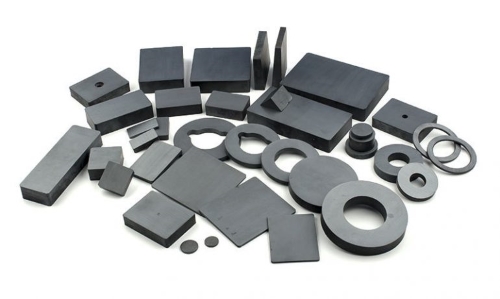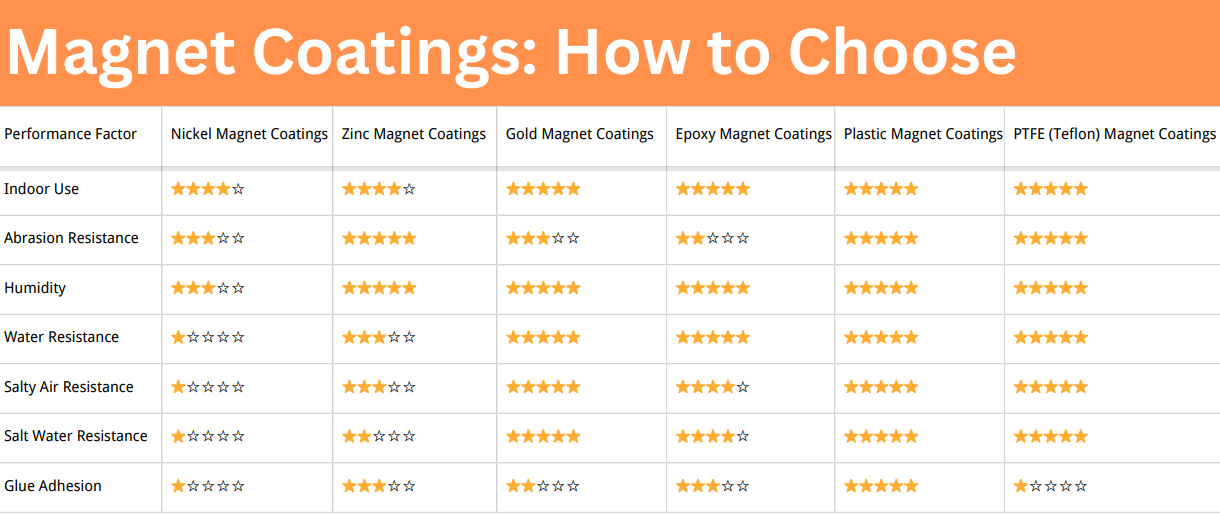Types and Uses of Permanent Magnet
Introduction
In general, magnets describe any materials that can attract ferromagnetic objects. These ferromagnetic objects include iron, nickel, cobalt, and so many others. Magnets produce magnetic fields, which are responsible for their ability to attract ferromagnetic objects. Although magnetic fields are invisible, their presence can be detected via the magnetic force they exert.
Permanent magnets are objects created from materials that have been magnetized. They are not easily demagnetized, and they can generate their magnetic field. Permanent magnets can be found all around our environment. They come in different types and have various uses.

Types of Permanent Magnet
Permanent magnets are usually grouped based on the materials from which they are made or the methods used in making them. The four most common types include Neodymium (NdFeB) magnets, which are known for their strong magnetic properties, Samarium Cobalt (SmCo) magnets, valued for their resistance to high temperatures and corrosion, Alnico magnets, offering excellent magnetic stability, and Ferrite magnets, which are cost-effective and widely used in everyday applications.
--Ferrite Magnet
Ferrite magnet is also known as a ceramic magnet. It is usually composed of iron oxide mixed with barium or strontium carbonate. The advantage of this type of magnet is that it is less expensive to create than most other types of magnets because the materials needed to form it are not costly. This magnet is rather brittle and has a low magnetic strength. However, it is highly resistant to corrosion. Ferrite magnet is available in grades 1,5,and 8. Each grade has a different magnetic strength.
--Alnico Magnet
As the name implies, this type of permanent magnet is made from aluminum (Al), nickel(Ni), and cobalt(Co). However, little quantities of other elements are added when producing Alnico magnets to improve their properties. It is highly resistant to corrosion and is stable even under high temperatures. This type of permanent magnet is produced by sintering and casting. Sintering gives Alnico magnet its high mechanical strength.
--Samarium Cobalt Magnet
Samarium Cobalt permanent magnet is made from samarium cobalt, which is a rare earth magnet. This magnet is highly resistant to corrosion, as well as temperatures of up to 300°C. It has a high coercive force and is used for high-energy products. Despite all of this, this type of permanent magnet is expensive and very brittle. Therefore, it is rarely used except in appliances that are subjected to high temperatures.
--Neodymium Magnet
Despite its similarities to the samarium cobalt magnet, neodymium magnet is less resistant to corrosion except when coated. It also has less resistance to high temperatures and low mechanical strength with a range of up to 50MGOe. The material used for the production of this type of magnet is quite costly. For this reason, they are primarily used selectively.
Table 1 Most Common Types of Permanent Magnets
|
Type |
||||
|
Magnetic Strength (T) |
1.0-1.4 |
0.8-1.1 |
0.6-1.0 |
0.2-0.5 |
|
Max Operating Temperature (°C) |
200 |
350 |
540 |
300 |
|
Corrosion Resistance |
Low |
Very High |
Moderate |
High |
|
Cost |
High |
Very High |
Moderate |
Low |
|
Common Applications |
Motors, Electronics, Wind Turbines |
Aerospace, Military, High-temp Motors |
Sensors, Instruments, Motors |
Speakers, Household Appliances, Magnetic Toys |
Uses of Permanent Magnets
Below are some key areas where permanent magnets are commonly utilized:
1. Electrical and Electronic Devices
- Motors and Generators: Permanent magnets are crucial in electric motors and generators, converting electrical energy into mechanical motion and vice versa. They are found in appliances like fans, refrigerators, and electric vehicles.
- Speakers and Microphones: Permanent magnets in speakers and microphones create sound by interacting with electric currents in voice coils.
- Hard Drives and Storage Devices: Used in computer hard drives to store and read data via magnetization.
2. Household and Consumer Products
- Refrigerator Magnets: Commonly used for decoration or holding notes.
- Magnetic Door Latches: Found in cabinets and refrigerator doors to keep them closed securely.
- Magnetic Toys: Used in educational and entertainment toys, enhancing engagement and functionality.
3. Industrial and Manufacturing Applications
- Magnetic Separators: Used in recycling and mining industries to separate ferrous metals from non-magnetic materials.
- Lifting Magnets: Heavy-duty magnets used in industries to lift and transport metallic objects safely and efficiently.
- Magnetic Clamps and Fixtures: Employed in metalworking and welding to hold components in place.
4. Medical and Healthcare
- MRI (Magnetic Resonance Imaging): Permanent magnets play a vital role in MRI machines, helping generate detailed body scans.
- Magnetic Therapy: Some alternative treatments use magnets for pain relief and healing, although scientific support varies.
- Hearing Aids: Tiny permanent magnets help improve sound transmission in some hearing aid models.
5. Transportation and Automotive
- Electric Vehicles (EVs): Permanent magnets in EV motors improve efficiency and performance.
- Magnetic Levitation (Maglev) Trains: These high-speed trains use strong permanent magnets to lift and propel themselves without friction.
- Fuel Gauges and Sensors: Many car sensors use magnets to detect fuel levels, positioning, and speed.
6. Security and Defense
- Magnetic Strips in Credit Cards: Store encoded data securely for transactions.
- Magnetic Locks and Security Systems: Used in doors, safes, and access control systems.
- Compass Navigation: Traditional compasses rely on permanent magnets to align with Earth's magnetic field for direction finding.
Summary Table
| Application Area | Examples of Uses |
|---|---|
| Electrical & Electronics | Motors, generators, hard drives, speakers |
| Household & Consumer | Refrigerator magnets, door latches, toys |
| Industrial & Manufacturing | Magnetic separators, lifting magnets, clamps |
| Medical & Healthcare | MRI machines, hearing aids, magnetic therapy |
| Transportation & Automotive | EV motors, Maglev trains, fuel sensors |
| Security & Defense | Credit card strips, magnetic locks, compasses |
For more information, please check Stanford Magnets.
Conclusion
Permanent magnets are one of the most versatile and valuable materials in existence. Given the many high-end uses of permanent magnets, it makes perfect sense to invest in them if they are essential to or help improve your business processes.














